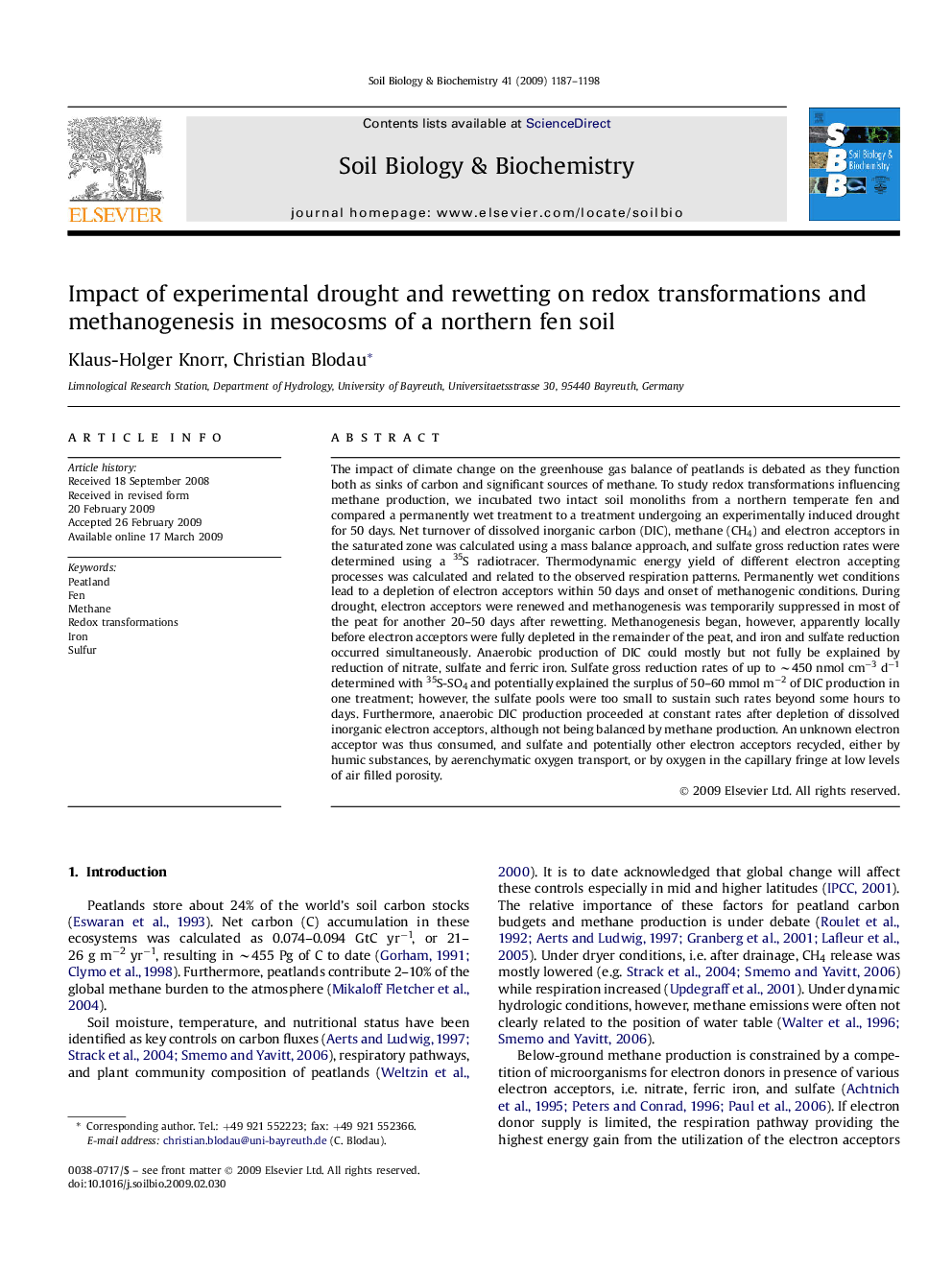| کد مقاله | کد نشریه | سال انتشار | مقاله انگلیسی | نسخه تمام متن |
|---|---|---|---|---|
| 2025621 | 1070004 | 2009 | 12 صفحه PDF | دانلود رایگان |

The impact of climate change on the greenhouse gas balance of peatlands is debated as they function both as sinks of carbon and significant sources of methane. To study redox transformations influencing methane production, we incubated two intact soil monoliths from a northern temperate fen and compared a permanently wet treatment to a treatment undergoing an experimentally induced drought for 50 days. Net turnover of dissolved inorganic carbon (DIC), methane (CH4) and electron acceptors in the saturated zone was calculated using a mass balance approach, and sulfate gross reduction rates were determined using a 35S radiotracer. Thermodynamic energy yield of different electron accepting processes was calculated and related to the observed respiration patterns. Permanently wet conditions lead to a depletion of electron acceptors within 50 days and onset of methanogenic conditions. During drought, electron acceptors were renewed and methanogenesis was temporarily suppressed in most of the peat for another 20–50 days after rewetting. Methanogenesis began, however, apparently locally before electron acceptors were fully depleted in the remainder of the peat, and iron and sulfate reduction occurred simultaneously. Anaerobic production of DIC could mostly but not fully be explained by reduction of nitrate, sulfate and ferric iron. Sulfate gross reduction rates of up to ∼450 nmol cm−3 d−1 determined with 35S-SO4 and potentially explained the surplus of 50–60 mmol m−2 of DIC production in one treatment; however, the sulfate pools were too small to sustain such rates beyond some hours to days. Furthermore, anaerobic DIC production proceeded at constant rates after depletion of dissolved inorganic electron acceptors, although not being balanced by methane production. An unknown electron acceptor was thus consumed, and sulfate and potentially other electron acceptors recycled, either by humic substances, by aerenchymatic oxygen transport, or by oxygen in the capillary fringe at low levels of air filled porosity.
Journal: Soil Biology and Biochemistry - Volume 41, Issue 6, June 2009, Pages 1187–1198